“Why We Eat with Our Hands” by Anjali Jariwala is a necessary addition to all childrens’ bookshelves
Exploring the message behind Monica Jariwala’s sister’s new book
Photo courtesy of Anjali Jariwala
Anjali Jariwala wrote “Why We Eat With Our Hands” as a gift to her daughter, Nyla.
November 18, 2022
English teacher Monica Jariwala fondly recalls the moment when her sister, Anjali Jariwala, video called her and the rest of their immediate family to show them the first copy of her newly published children’s book, “Why We Eat with Our Hands.” As Anjali flipped through the glossy pages, she read the story aloud and pointed out her favorite pictures to her supportive family. Aside from feelings of pride and excitement, Monica also found the situation to be extremely heartwarming, even going so far as to ask for an autograph from her sister.
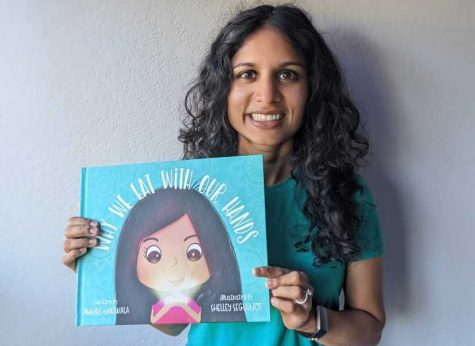
“Why We Eat with Our Hands” was self-published by Fit Advisors Founder, Anjali Jariwala, on Sept. 25, 2022. The book revolves around Nyla — named after Anjali’s daughter — and her journey to understanding traditions behind Indian food and the reasons why people eat with their hands. Overall, Anjali’s main goal in publishing this book is to provide her daughter with the diverse bookshelf she never had as a child.
Anjali and Monica grew up in Los Angeles, and they moved to Illinois when Anjali was 12 years old and Monica was eight. In Illinois, Monica found herself struggling to fit in and maintain her cultural identity due to the extreme culture shock. However, Monica says that she appreciated how her older sister was always a great role model who provided her with useful advice.
“We went from having a lot of diversity, to growing up in a really white area where we rarely read anything by authors of color,” Monica said. “I think I was one of [only] five or six Indian kids in high school. When I would tell them I’m Indian, people didn’t know that I was South Asian. They asked me if I was a part of a tribe. It was just really hard because [I felt] like there [was] something off about me.”
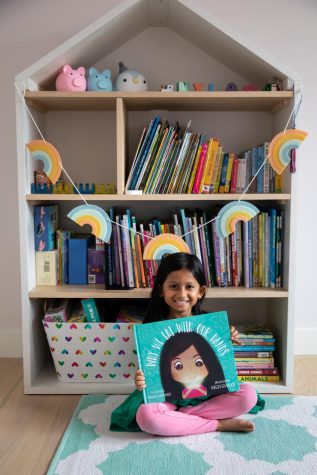
Similarly, Anjali reflects on her experience in high school, where she was constantly hiding her cultural holidays because holidays that were not from a European cultural background were not commonly celebrated in her community. With the hope of creating generational change for her daughter, Anjali makes an effort to celebrate Diwali at her daughter’s school with book readings, making arts and crafting Diya lamps in order to help inform others about the celebration of Diwali.
“Me and three other moms in my daughter’s class did a Diwali celebration for the entire kindergarten [grade],” Anjali said. “I recognize that my parents are immigrants to this country and I am not. But then [during] each subsequent generation, some of the culture does get lost over time, so I know that we have to make a bigger effort to continue to maintain that cultural identity as well as the enjoyment of the culture.”
Anjali explains that due to the lack of diversity in the publishing industry, several South Asian authors, including herself, opt to self-publish their stories. Anjali says that although the process is often difficult because authors have to navigate the complex self-publishing industry and fund the project themselves, “a lot of it comes from that passion to have more representation.” In the future, Anjali hopes that big publishing houses will recognize that a lot of people are interested in buying children’s books featuring a variety of different cultures.
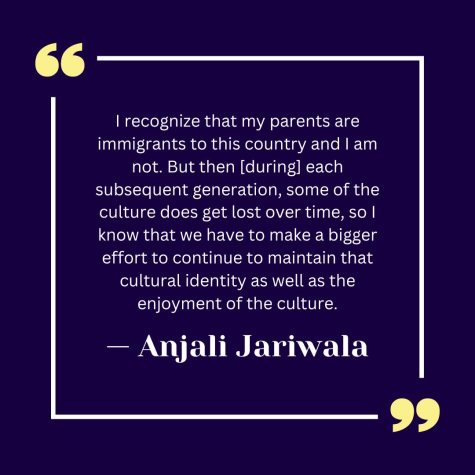
As the founder of her financial planning firm, Anjali says that people of color are being forced into entrepreneurship because they cannot find adequately inclusive companies in which they can be their true selves.
“I worked [in a] corporate [job] for many years and that environment [was] always very competitive and you’re friends with people but you also know that only one of you is going to get promoted, so it turns into this culture in which you can’t be supportive of each other,” Anjali said. “I found that being an entrepreneur, especially if you’re doing something that’s outside the box, addresses the problem and [tries] to find a solution to something out there. There are so many people who are willing to help and are willing to help not because they want some monetary compensation or anything. They’re just genuinely excited about what you’re doing.”
Another challenge Anjali has had in writing her book is that, as a financial advisor, she is used to analyzing and interpreting data and has an analytical, systematic work style that does not translate to creative writing. When Anjali sent an initial draft of the story to a member of a South Asian author’s Facebook group, she received humbling feedback. The editor, Suhani, said, “OK, this is a great start, but I want you to throw this entire thing out and start all over again.”
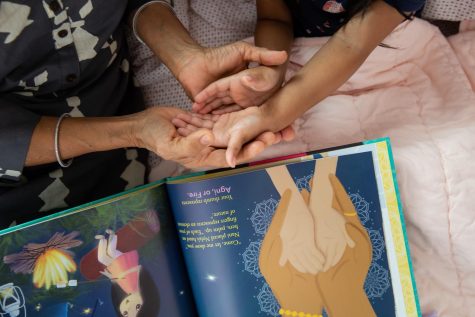
“I approached the process the same way I would approach my financial planning client, right?” Anjali said. “[Through] data gathering. I did a ton of research. I got a bunch of books and then I just started poking around in different groups, just trying to learn all the aspects of the process. [There were a] lot of growing pains going through that process. I thought I could do it in a year. It took me two and a half years.”
Anjali’s struggles eventually paid off, and she drew great gratification from witnessing her family and her community enjoy the published product. Monica especially loves how the story illustrations incorporate items from Anjali’s house and how the illustrator rendered Nyla in animated form. Her favorite part of the book is the image in which Nani — Nyla’s grandmother — cups Nyla’s hands within her own, because it represents the close bond between the two.
Shelley Seguinot, who illustrated the book, began her illustrating business in 2003 while she also worked as a police officer in New York City. During COVID-19, she taught herself how to self-publish on Amazon, and published a coloring book featuring food characters for the first time.
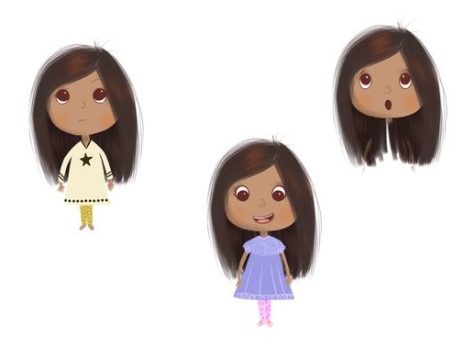
Later, when Anjali asked Seguinot to illustrate her book, Seguinot became inspired to bring Anjali’s daughter and mother’s story to life. Despite the locational barrier, Anjali and Seguinot frequently met through Zoom to put their minds together and develop the design.
“We started [when Anjali] sent me a picture of her daughter Nyla and her mother,” Seguinot said. “[Anjali] wanted [characters] to [look] pretty close to what her daughter and her mother actually looked like in real life. I [submitted] several sketches to [Anjali, of] different styles. [Sometimes] we [had to] go back to the drawing board and revise certain things so it would go with the flow of the narrative.”
Though Seguinot is not of Indian descent, she explains that she was given the opportunity to learn about a new culture through Anjali’s vision, which was a fascinating experience for her.
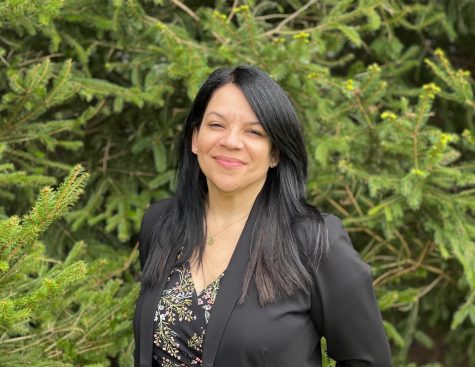
“I learned a lot throughout the process,” Seguinot said. “So for someone who was not from that background, to be able to take on and embrace such a beautiful story, it was fascinating to me. I was grateful in the end that she selected me as the illustrator because I was able to share my vision with her from an outsider’s view because I wasn’t familiar with the culture.”
Although Anjali’s book centers around the question “Why We Eat with Our Hands,” in the end, her main inspiration is to provide her daughter, Nyla, with new forms of media representation to allow her to fully embrace her identity.
“Nyla is the joy of the entire family,” Anjali said. “If you go into my sister’s classroom, there are definitely pictures of Nyla. There’s just something really wonderful about a child. They’re so innocent, and they’re so open minded, because they’re not bombarded with life. So it’s almost like we get to re-experience a lot of things through her lens, which is really fun.”
Buy on Amazon: https://www.amazon.com/Why-Eat-Our-Hands-Celebration/dp/1634895495
This story was originally published on El Estoque on November 5, 2022.




































